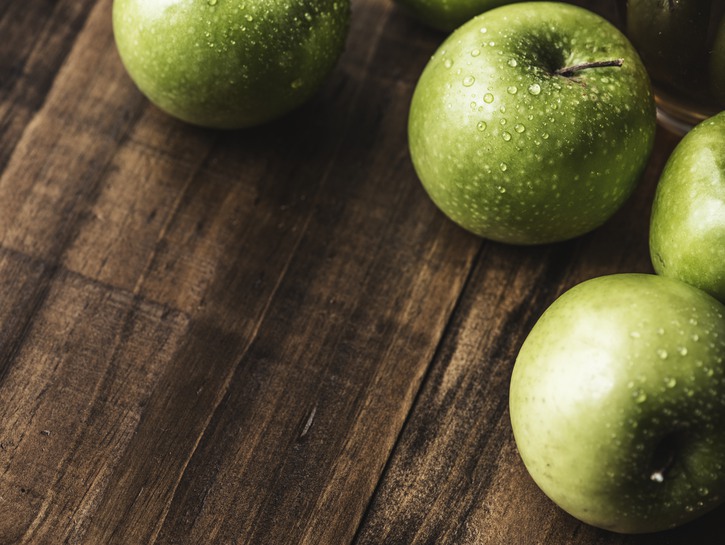Unloading fruits and vegetables into your fridge at home guarantees that you’ll have a healthy snack waiting for you. While you can enjoy a crisp apple or a ripe banana for a couple of days, we’ve all seen our beloved snacks go brown or lose their freshness. A big part of keeping your produce fresher for longer is learning why they go bad in the first place and the steps you can take to maintain their life.
This extensive guide will teach you how to keep apples from turning brown as well as how to keep your fruits and vegetables fresh in the long run!
How To Keep Fruit Fresh
Apples

The reason why apples go brown as soon as you cut them is that you’ve exposed the meat of the fruit to oxygen. To go into it a little further, the official term is known as “enzymatic browning” and it happens when an enzyme called “polyphenol oxidase” oxidizes (I know…). New chemicals are then released which produce the browning. Of course, this wouldn’t be such a big deal if it only affected the look, but the taste, smell, and even the nutrients will be negatively impacted as well.
It might seem like there’s no way to prevent it since, hello, the apples are going to see oxygen at one point. But these methods work well to prevent your apples from browning:
Soak your apple slices in a saltwater mixture – All you need to do is mix half a teaspoon of salt with every cup of water that you use. Stick the slices in there and leave them for 10 minutes. From there, you can drain and store them in the fridge until they’re ready to be used. Remember not to leave the slices in the mixture for any longer than 10 minutes because the salt will then seep into the flavor of the apple. If you do notice a salty flavor you can just rinse the slices under some water.
Use a mix of citric acid – You can use any fruit that contains citric acid to coat your slices and prevent the enzymatic reaction. All you need to do is squeeze the juice from a citric fruit onto your slices and toss them to ensure they’re coated. Seal the container and places your slices in the fridge for 4 – 5 days of freshness. The only downside with this one is that the slices might taste like the other fruit you used.
Bananas

Bananas are another common fruit we all tend to indulge in every now and then. Much like apples, bananas contain an enzyme called polyphenol oxidase which reacts with oxygen and causes the browning of their skin. They also go brown in warmer temperatures or if they’re left outside.
Wrap the stem in plastic wrap – a foolproof method to keep your bananas from ripening too quickly or turning brown is to secure each stem with cellophane. Pull each banana off the bushel you bought and individually wrap the stems with plastic wrap to keep them fresher longer.
Avocados

You guessed why avocados go brown when you cut them: an enzyme causes the flesh to oxidize when exposed to the air and turns the flesh into a brown color. It can already be difficult enough to tell when your avocados are ripe, let alone how to keep them safe from oxygen and stop them from going bad too quickly. But there are a few methods you can try.
Use lemon or lime juice – Just like with apples, you can use citric acid on avocados to prevent browning for up to an extra day of freshness. All you need to do is squirt your avocado with fresh juice and you can even use this method on guacamole!
Store them with onions – Another pretty simple way to prevent avocado browning is cut a red onion into large pieces and place the chunks in the same container as your avocado. I know it seems like such a potent vegetable will no doubt cause flavor alterations, but if the onion only touches the skin of the avocado you won’t notice changes in taste.
Carrots

If you’ve ever noticed a white film on your baby carrots at home, it’s because the vegetable is dehydrated. Full-length carrots may also seem to be going white or drying out a bit and it’s mainly because they do better in moisture. This is exactly why you should be using water to keep them fresher.
Keep them in water – stick your carrots in a container filled with water and stick it in the refrigerator to keep them in tip-top shape.
Cut the green stems off – the stems will suck up all the moisture and then cause your carrot to go a bit limp or become dehydrated.
Lettuce

Anyone who’s purchased a head or bag of lettuce before knows how quickly leftover leaves can go brown or become limp. Lettuce, just like fruits, react poorly with oxygen and the oxidation causes the brown color. Much like with carrots, the limpness is caused by dehydration. The good news is that you can easily prevent this!
Place a paper towel over your salad – one of the easiest and most inexpensive ways of keeping your lettuce fresh is to place a paper towel on top of leftover salad and then wrap the dish in plastic wrap.
Keep it away from fruits – any fruit that has high ethylene will cause your lettuce to wilt and guarantees a limp head of lettuce. Keep your fruits and greens away from each other in the fridge to avoid this.

Nothing’s worse than spending money on fruits and veggies that seemingly go bad as soon as you cut into them. But with these simple tips, you can keep your produce at its finest and enjoy these healthy snacks for much longer!
